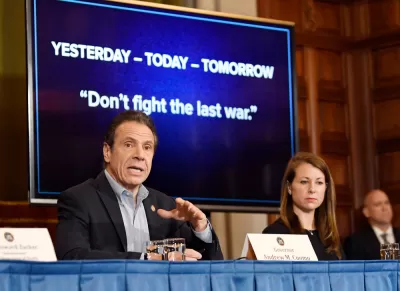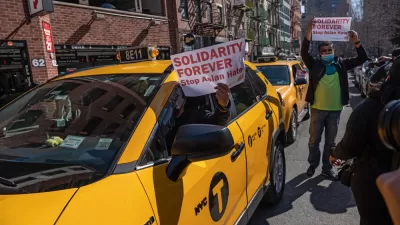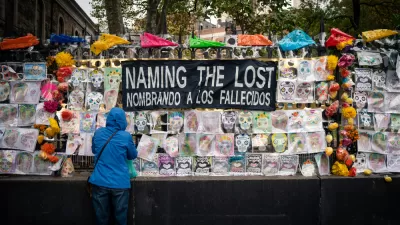The big question for planners since the outset of the pandemic has been how cities and communities will change, and what role planners will take in implementing those changes. Here are four potential ways for urban planning to respond to the crisis.

The COVID-19 pandemic has resulted in dramatic global changes in a relatively short period, many of which affecting the work of city planners. Planners will likely deal with challenges including changing transportation patterns, development approvals moving to the digital realm, and fiscal austerity at the local government level leading to layoffs and reduced capacity to maintain services and implement new projects.
The quick shift has made people eagerly discuss the future of urban planning after COVID-19. Failing to shift to the new normal created by the coronavirus would mean a missed opportunity for city planners.
Here are four compelling possibilities that could shape the city planning sector in the post-pandemic world.
1. City Planning Will More Frequently Address the Need for Transportation Independence
As many areas of the world begin emerging from lockdowns, people can start working away from home again. Getting to the workplace safely is a common concern, though. Even as transit providers introduced new safety measures, some of them still only operate on Saturday schedules or have temporarily postponed some routes. Those changes may mean that people who previously relied on public transit to get around are still out of luck.
If employers can't, or won't, make accommodations, workers risk losing their jobs. City planners must prioritize transportation independence as a top-of-mind concern while making post-coronavirus choices. When people have the freedom to get where they need to go without experiencing hassle and risk, quality of life increases.
Janette Sadik-Khan, who served as the commissioner of the New York City Department of Transportation from 2007-2013, believes urban recovery from COVID-19 starts in the streets. Sadik-Khan sees a future where cities are safer, more accessible and less congested.
In an interview with Foreign Policy magazine, Sadik-Khan clarified this point: "We can reclaim and reset our streets to move people by foot, bike, or public transportation—and do it safely, affordably and easily, no matter where they live in the city. And we have an opportunity to give city residents around the world true transportation independence—real choices for getting around and the freedom not to have to own a car." Sadik-Khan also suggests new safety protocols and expanded service to make the next pandemic more manageable.
In the United Kingdom, city officials enacted emergency bike-friendly measures, such as wider pavements and low-traffic residential zones. Urban planners play a crucial role in ensuring such changes remain in place. As international transit consultant and author Jarrett Walker pointed out in the same article, “Transportation history is full of stories where something that was done temporarily turned out to be permanent because people didn't want to go back.”
2. Design Decisions for Public Urban Spaces Will Become More Proactive Rather Than Reactive
City planners have a long-term responsibility to consider public health when designing urban spaces for the public. For example, well-ventilated public areas with plenty of natural light could prevent infectious diseases from spreading.
During the COVID-19 outbreak, many local officials made reactive decisions to urge people to keep their distance. In Dundalk, Ireland, county officials blocked off seating areas in the public square with tape and metal barriers after realizing the number of people using them did not support social distancing. That was not a design decision in itself, but different choices for the space could have allowed visitors to maintain a safe distance from the start. Then, they would have kept enjoying the popular attraction and supporting the surrounding businesses—many of which altered their services but remained open.
Richard Sennett, a professor of urban studies at the Massachusetts Institute of Technology (MIT) and senior adviser to the United Nations on its climate change and cities program, envisions a future where design even more prominently shapes how people enjoy urban areas. Sennett anticipates design decisions occurring at both the building and neighborhood levels. This change would enable residents to make the most of the spaces available to them and avoid feeling packed into certain areas.
A substantial part of urban recovery from COVID-19, then, involves designing cities by making decisions that are highly likely to keep people safe and healthy while socializing. That's not to say city planners didn't consider those things before, however. Now that the world knows how much a pandemic can disrupt everyday life, more people will proactively think about how to reduce the effects of the next public health crisis.
3. Urban Planners Will Become Even More Reliant on City-Level, Granular Data
Much of the available location-specific data gets aggregated at the national level. Such statistics can still help city planners, but they’ll get even more value from city-level data. It’s easy to see how more specific data could help, especially during another threat to public health.
For example, a pandemic map showing the number of cases in each city allows planners to determine the hardest-hit areas and see where public health measures are working well. Maps could also indicate potential risks. For example, they may reveal that three-quarters of the residents in a single community primarily use public transit but none of the routes offer easy access to medical care.
Making strides with city-level, granular information is only possible if the parties collecting it keep the data out of silos and share it among the necessary departments. When city planners have straightforward access to relevant statistics, they can make more confident decisions. However, if they have to spend too much time searching for data, or if the data they find is inadequate for the purpose of making sense of hyper-local trends, they'll be less inclined to rely on data in ways that could contribute to effective planning processes.
4. City Planners Will Become Champions of Their Work and Speak More Assertively to Local Authorities
The density debate has raged during the coronavirus pandemic. What many people don't realize, though, is that it's not a new issue. There's a long history of blame targeting densely populated cities for public health issues. Previous attempts to encourage people to spread out, such as creating public parks, did not completely address the root problems.
Economic shortcomings, rather than dense cities, were more responsible for widespread illnesses, sanitation problems and other matters that compromise human well-being. Urban planning after COVID-19 will feature many opportunities for people to weigh in on the effects of density for health outcomes. Some city planning analysts see the coronavirus pandemic as a call to arms.
Instead of defending their principles and actions, planners must champion them. The time for quiet policymaking has passed. City planners should expect to encounter resistance from other authorities about their decisions, especially as people raise concerns about density. They can combat that resistance by being willing to have assertive conversations that give evidence of careful thoughts and long-term viewpoints.
Learning From New Experiences
Although the coronavirus pandemic brought tragedy and hardship, a potentially positive aspect is that the virus and its impacts on residents around the world could improve urban planning after COVID-19. Some of the predictions here don't represent dramatic departures from what city planners were already doing before the outbreak.
Planning experts must evolve by relying on the experiences and information gained during the pandemic. They can depend on it to thoughtfully shape future progress and avoid expensive and frustrating mistakes. Investigating which cities weathered the COVID-19 storm best and studying the reasons for that success should lead to safer and more livable cities.

Maui's Vacation Rental Debate Turns Ugly
Verbal attacks, misinformation campaigns and fistfights plague a high-stakes debate to convert thousands of vacation rentals into long-term housing.

Planetizen Federal Action Tracker
A weekly monitor of how Trump’s orders and actions are impacting planners and planning in America.

Chicago’s Ghost Rails
Just beneath the surface of the modern city lie the remnants of its expansive early 20th-century streetcar system.

MTA Poised to Break Ridership, On-Time Service Records
New York City’s transit system saw strong increases in ridership and improvements in service quality in the first half of 2025.

Bend, Oregon Zoning Reforms Prioritize Small-Scale Housing
The city altered its zoning code to allow multi-family housing and eliminated parking mandates citywide.

Amtrak Cutting Jobs, Funding to High-Speed Rail
The agency plans to cut 10 percent of its workforce and has confirmed it will not fund new high-speed rail projects.
Urban Design for Planners 1: Software Tools
This six-course series explores essential urban design concepts using open source software and equips planners with the tools they need to participate fully in the urban design process.
Planning for Universal Design
Learn the tools for implementing Universal Design in planning regulations.
planning NEXT
Appalachian Highlands Housing Partners
Mpact (founded as Rail~Volution)
City of Camden Redevelopment Agency
City of Astoria
City of Portland
City of Laramie





























